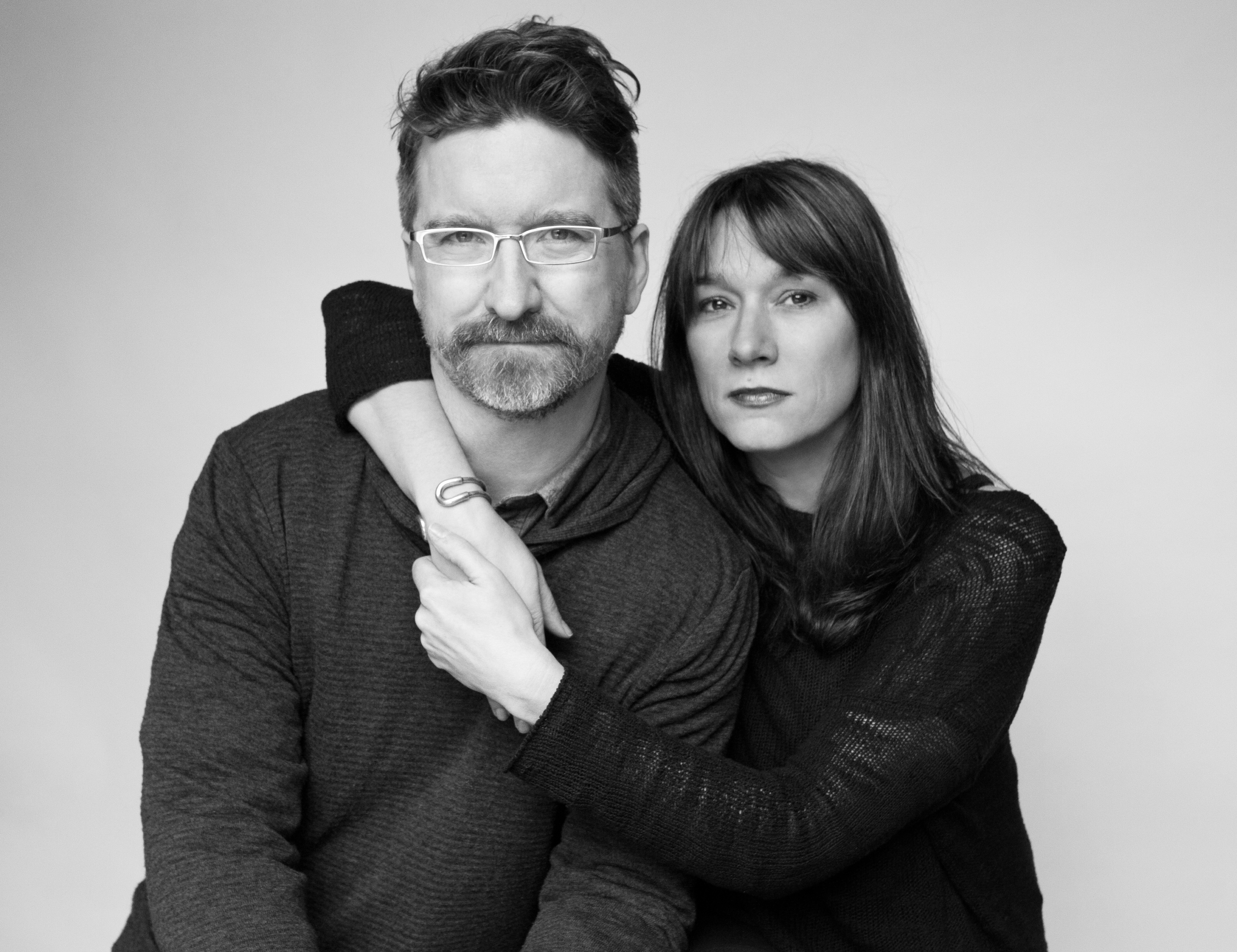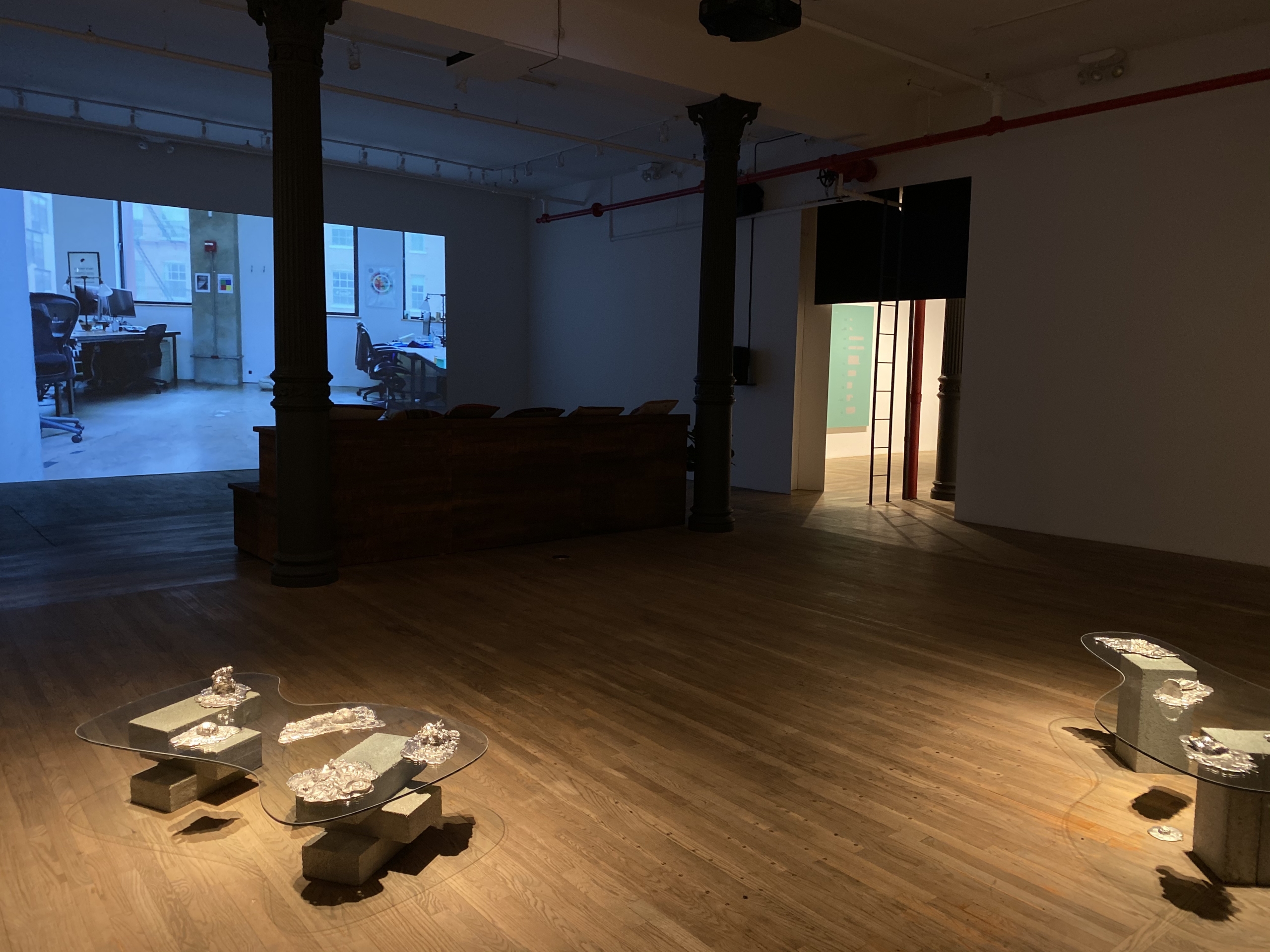Kickstarter, Trump Tower, and the Triumph of New Media Art at Postmasters Gallery
“A motto of the gallery is that we show the work that reflects our time,” says Magdalena Sawon, who co-founded Postmasters Gallery with her husband Tamas Banovich. She’s talking about Cleaner, the gallery’s current exhibition by new media artists Jennifer and Kevin McCoy. Sawon, a trailblazer in her own right, foresaw new media as an important art form in the ’90s, when that was a revolutionary concept. Eventually, the rest of the art world followed her lead.
Even in terms of location, Postmasters was always one of the first galleries to forge a new neighborhood: from its inception on the East Village’s Avenue A in 1984, to SoHo in 1989, and then Chelsea in 1998 and in 2013, to its current address at 54 Franklin Street in Tribeca.
Cleaner is the McCoys’ eighth solo exhibition at Postmasters. The acclaimed artists were awarded a Guggenheim Fellowship in 2011, recently exhibited work at the Whitney Museum, and in one of the highlights of Sawon’s career, sold their 2001 piece, Every Shot, Every Episode, to the Metropolitan Museum of Art.
A multimedia installation, Cleaner explores the nature of work in the current economy, including creative artists holding 9-to-5 jobs in the tech industry. The installation includes a 27-minute film shot at the Kickstarter headquarters (where the McCoys were artists in residence) and metal sculptures comprised of items from office workers’ desks, such as rubber bands, an apple, and a roll of tape, which are cast and poured in tin alloy.
The film follows a young cleaning person (Magdalena Kaczmarska) as she straightens up a corporate tech office after hours. As she cleans up after the workers, and as she muses on their lives, we are privy to her subtitled thoughts. In one scene, she erases the words “Do Not Erase” on a conference room whiteboard filled with snarky comments about various tech companies. Her scrubbing movements often resemble the graceful choreography of a modern dancer and we wonder if office cleaning is the day job of an aspiring dancer or simply a manifestation of her creative inner life. After taking a break from her work to moonlight as a party promoter, she returns to her cleaning with renewed intensity.
The idea for Cleaner originated near Silicon Valley. “We did a residency at this great artists’ space on the West Coast called the Headlands, which is close to San Francisco,” says Jennifer McCoy. “We were driving around, looking at Facebook headquarters and Apple headquarters, thinking about corporate architecture and the kinds of experiences happening; not just what it’s like to work there but where the workers’ ideas come from. What kind of problems are they trying to solve, really? Are they solving problems that are societal issues or are they just creating new markets of redundancy that make things easier or even worse?”
After viewing a prior project by the McCoys, Kickstarter suggested they team up for a campaign. The McCoys decided to shoot the film at Kickstarter’s Greenpoint headquarters in Brooklyn, and the party scene became the campaign, as people donated $25 to appear in the scene.
Cleaner is the second installment of the McCoys’ WORKSTATIONS trilogy. The first film, Broker, was filmed at an Airbnb condominium in the Trump Tower at the U.N. Plaza in 2016.
“This was four months before the election,” says Kevin McCoy. “There were many Trump-branded items in the apartment, such as a Trump cologne called Empire. History just caught up with us, like with Cleaner, we were making this film about work issues, and right in the middle of production, all Kickstarter’s labor issues cracked open and are still ongoing.” Quitter, the third installment, will explore the concept of exit.
“All of their work deals with the notion of taking film apart,” says Sawon of the McCoys. “Their earlier works deal with the idea of database that can be randomized and interactive and fly in the face of a linear presentation of the film.” Postmasters has worked with new media since the seminal 1996 work, Can You Digit. “The landmark of that show was that we presented screen-based and software-based works on separate monitors, so it had more of a sense of a real exhibition and the same level of respect given to screens that you would give to a painting,” says Sawon. “You don’t show paintings one above the other and you don’t show them in the basement.”
Cleaner is screened daily on the half-hour at 54 Franklin Street, through January 25








